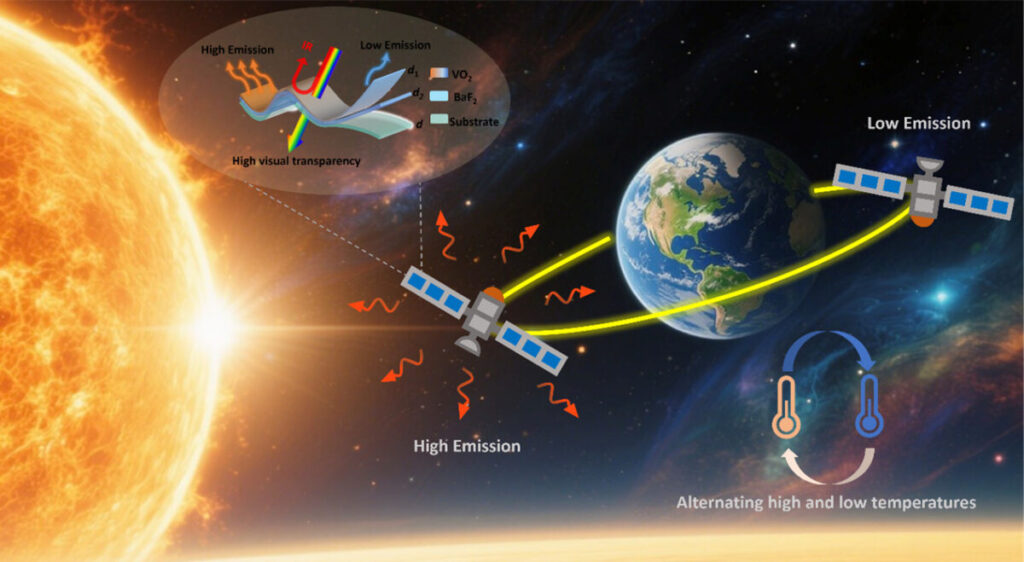Researchers in China have investigated how transparent smart radiant devices (TSRD) can be used to protect space solar cells against extreme thermal fluctuations. Through a series of simulations, they have shown that the proposed technology could become an “effective” solution for thermal management of spacecraft.
A research team from China has proposed a transparent Smart Radiation Device (TSRD) for efficient thermal management of solar cells on spacecraft, which are exposed to hard environmental conditions, in particular extreme thermal fluctuations that can influence the performance of the device and light absorption.
The TSRD, which can be used as a coating on cells, uses a thermochromic material that changes the amount of heat, depending on the temperature. “Our research presents a multidimensional breakthrough, because we introduce a new TSRD that solves the long -term challenge to balance high visual transparency with effective thermal radiation scheme,” said the corresponding author Xiaohu Wu told PV -Magazine.
The thermochrome material used by the team was vanadium dioxide (VO2). These composite transitions from an insulating state to a metal state at a phase transition temperature of 68 ° C, which can determine a dramatic change in its optical properties. That is why a transparent substrate was considered necessary.
The team tested three substrates in a MatLab simulation: Single-Layer Indium tin oxide (ITO), Single Layer Silver (AG) and a structure of ITO/AG/ITO. Between the substrate layer and the VO2, the academics placed a protective layer of barium fluoride (BAF₂). According to their optimization, the VO2 had a thickness of 0.015 μm and the bafkin had a thickness of 1.5 μm in all cases. The optimized some ITO thickness was 0.26 urn, the single AG was 0.003 urn and the combined layer included AG of 0.003 μm with ITO of 0.01 urn on each side.
“The execution of TSRD in balance between various spectral tires, shows the VO2/BAF2/ITO/AG/ITO structure a superior performance between the three cases,” said the scientists, and noted that the coating was able to reach transmission of 0.8 and 0.72 in the visible spectrum, low-emperururururururururururely Infrared, a solar absulation of up to 0.51 infrared. Band.
They also found that the VO2/BAF2/ITO device reached the transmission of 0.69 and 0.63 under high and low temperature conditions. The absorption of solar energy was found at 0.28 and the emission modulation was 0.44. In the case VO2/BAF2/AG, the results were 0.77, 0.70, 0.15 and 0.52 respectively. “Moreover, the addition of a loss -free dielectric layer as a protective coating not only retains the excellent performance of the TSRD, but also has the potential to improve its sustainability and lifetime,” the academic added.
“For experimental validation and technical applications, we intend to prepare high-quality TSRD samples and perform performance tests under extreme circumstances that simulate the space environment,” Wu said. “By comparing experimental data with theoretical models, we want to assess the stability, reliability and long-term performance of TSRD in real space environments, thereby providing an experimental basis for their practical use in thermal management systems of spacecraft.”
The new technology was presented in “Transparent smart radiation device for efficient thermal treatment of solar cells of spacecraft“Published in Case studies in thermal engineering. Scientists from Northwestern Polytechnical University in China and the Shandong Institute of Advanced Technology have contributed to the research.
This content is protected by copyright and may not be reused. If you want to work with us and reuse part of our content, please contact: editors@pv-magazine.com.

